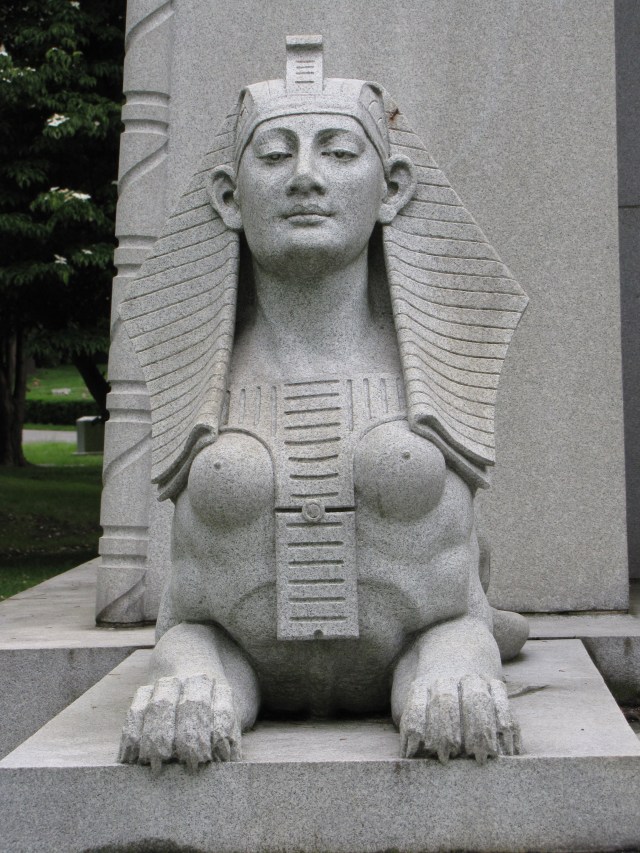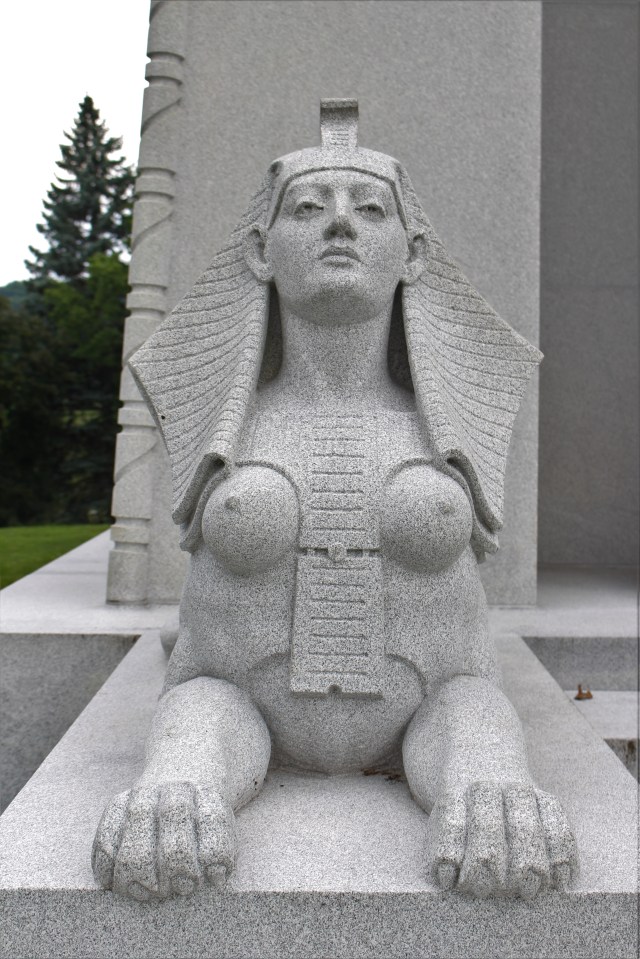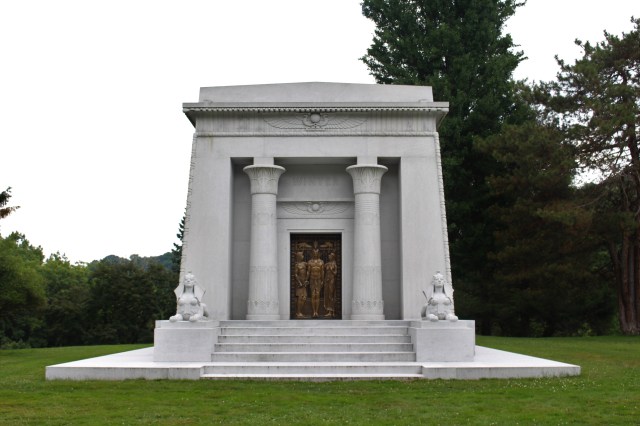The Egyptian Revival was an architectural movement that swept the United States and Europe. The movement in America was influenced by three separate events—the first was Napoleon’s defeat of Egypt in the 1790s. Later Napoleon published the results of his scientific expedition, which was printed in serial form, the last released in 1826. The second event was when the so-called “Cleopatra’s Needle” was erected in Central Park in New York on February 22, 1881. Lastly, “Egypto-mania,” as some called it, reached fever pitch in November 1922 when King Tut’s tomb was discovered, and the news flashed around the world.
The influence of the Egyptian Revival was reflected in buildings in the United States as early as the 1820s. The revival was also found in American cemeteries in the 19thcentury and on into the 20th century. Egyptian ornamentation can be divided into three categories—architectural, geometric, and natural.
One example of a mausoleum that was Egyptian Revival-style architecture was the F. W. Woolworth (of five-and-dime department store fame) Mausoleum in Woodland Cemetery in the Bronx built by the Farrington, Gould, and Hoagland Monument Company. According to the book, Sylvan Cemetery: Architecture, Art, & Landscape at Woodlawn, (page 107) “Egyptian themes inspired mausoleum doors, such as the one designed by Julius Loester for the Woolworth mausoleum, with costume, birds, and flowers intended to signify ancient Egypt and its enduring mysteries .”
According to a flyer published by the Allegheny Cemetery Historical Association in Pittsburgh, Pennsylvania, an exact replica of the Woolworth Mausoleum was built for Emil Winter. Winter was an “industrialist, banker, and founder of The Pittsburgh Steel Company, making him a man of vast wealth…Living in New York City in his later years, he saw the Egyptian-style Woolworth family Mausoleum in Woodlawn and had an exact replica made for him in 1930 for his own lot in the Allegheny Cemetery.” Even the door created by Julius Loester adorns the Winter Mausoleum.
The two gray granite mausoleums have strong and commanding architectural features. The sides of the tombs tilt slightly inward from the bottom to the top. Rather than a traditional cavetto cornice curves which forms into a half circle at the top, the tomb has an architrave with a repeating reed pattern. The pediment rises very slightly to a peak. The monument is geometrically balanced—two sphinxes flank the tomb.
The natural elements of the monument feature two winged globes with uroei above the doorway and on the cornice. In these examples there are three sets of falcon wings that are a symbol of the king, the sun, and the sky. The globe represents the Egyptian god, Horus. The uroei, snakes, are waiting to strike. They symbolize the king’s ability to ward off evil spirits.
Along the sides of the doorway are the long slender stems of the lotus flower, sacred to the Egyptian and Buddhist cultures. The Lotus represents purity and evolution. The lotus is born in the water, the primordial ooze—making it also a symbol of creation and rebirth. Etched into the columns are incised scarabs and ankhs—both symbols from ancient Egypt. The scarab beetle was represented the cycle of life—rebirth and regeneration and the ankh as the key to eternal life.
The monument gives one the sense of solemnity and a sense of eternity, reminiscent of the temples of the pharaohs.







